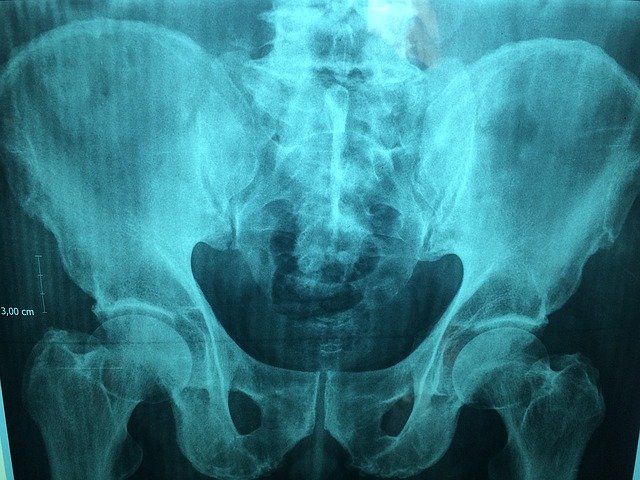 Pixabay/A bone cancan show if you have osteoporosis.
Pixabay/A bone cancan show if you have osteoporosis.
After the region's first and another predicted for Friday morning, snow, sleet and ice will define the landscape and create a perfect storm for increased falls and subsequent broken bones. While people of all ages can experience fractures and need to be especially wary this time of year, individuals with osteoporosis present a particular concern for healthcare professional of the Osteoporosis Prevention and Treatment Program team at AtlantiCare.
Certainly, slippery sidewalks and wind gusts make winter even more dangerous for people already at risk for fractures, and these individuals, as well as their loved ones and caretakers, need to be at heightened awareness during the winter, said AtlantiCare rheumatologist Susan Ward, MD. However, the reality for people with osteoporosis is that even in the most ideal of circumstances they can experience a fracture from something as simple as stepping awkwardly off a curb. Being aware of your bone health and managing osteoporosis is key to preventing fractures as well as some significant health issues and even death that can stem from them.
Osteoporosis, which occurs in approximately 10.2 million people in the U.S., is a skeletal disorder that causes the bones weaken, leading to increased fracture risk. Unfortunately, a common myth is that osteoporosis and fractures are only something my grandmother has to worry about. While osteoporosis is most common among women over 50, one in six men will get the disorder. It can also strike younger people with certain medical problems such as eating disorders, cancer, kidney disease, celiac disease and others.
When you look at fractures as a whole, the numbers in the U.S. are staggering. According to Ohio State University studies, about 6.8 million fracture cases occur annually, resulting in 3.5 million visits to emergency departments and nearly 900,000 hospitalizations. In addition, until age 45 men are more likely to experience a fracture, and the average person will have two bone fractures during their lifetime.
Through their mid-20s most people regenerate bone faster than their bone deteriorates, so they build bone mass, said AtlanitCare rheumatologist Zain U. Abideen, MD. This means most people have peak bone mass by age 30 and from there bone mass can start declining, causing fracture risk to increase. The golden rule is to take care of your bone health throughout your lifetime. Don't smoke, exercise regularly, maintain a diet that gives you significant calcium and vitamin D, and limit alcohol consumption. If you take certain medications that can contribute to osteoporosis, such as steroids and those used to treat cancer and gastric reflux, you should also take greater care to practice regular bone density screening.
After experiencing a wrist fracture, adults over age 60 are more than 5.5 times more likely to fracture a hip within a year, and 17 times more likely within the first month. Perhaps even more shocking is this statistic from the Journal of the American Medicine Association: approximately 30% of people with hip fractures will die within the following year.
AtlantiCare's Fracture Liaison program is working to change these realities. The program, which recently saw its 100th patient, works to intervene with fracture patients and their caregivers to put practices into place to prevent additional fractures and fracture complications that can lead to lessened mobility, lower quality of life, or death. Through the program, the Fracture Liaison visits patients while they are in the hospital recovering from a fracture to assess their bone health, pinpoint the cause of the fracture, and establish protocols ranging from bone scans (DEXA scans) and taking medication, to ensuring they visit a primary care provider or rheumatologist regularly, to diet, physical therapy and exercise programs. The liaison program also assesses the home environment to mitigate fall risks and does follow-up checks to make sure the necessary steps continue after discharge. The AtlantiCare fracture liaison also reaches out to non-admission fracture cases to encourage those patients to participate in the program.
Many people think of fractures, especially wrist fractures, as an accident, not an indication of something more significant, said Fracture Liaison Heather Schultz, RN. A fracture is a red flag that someone might have an underlying condition osteopenia, which is often a precursor for osteoporosis. My role is to intervene to help the individual manage the condition and prevent injury. Most patients and their caregivers are surprised to learn how much can be done with little disruption to their lives to keep osteoporosis in check and significantly decrease their risk of getting another fracture.
One of only three NJ Hospitals certified by Own the Bone for high performance in Osteoporosis care, AtlantiCare encourages individuals to contact their healthcare provider if they experience symptoms of osteoporosisincluding loss of height over time, stooped posture, and compression fractures or full fractures that occur with little or no trauma. For people with average risk, the National Osteoporosis Foundation recommends bone density screening to begin in women at age 65 and men at age 70. People who have had one or more fractures, or who have osteoporosis risk factors, should talk to their provider about what is right for them.
To learn more about osteoporosis risk and treatment, maintaining bone health, and AtlantiCare's Fracture Liaison program, visit atlanticare.org or call 1-888-569-1000.
TIPS TO AVOID THE SLIPS
If you must venture out in snow, ice or temperatures where ice can form on walkways, practice these safety tips: